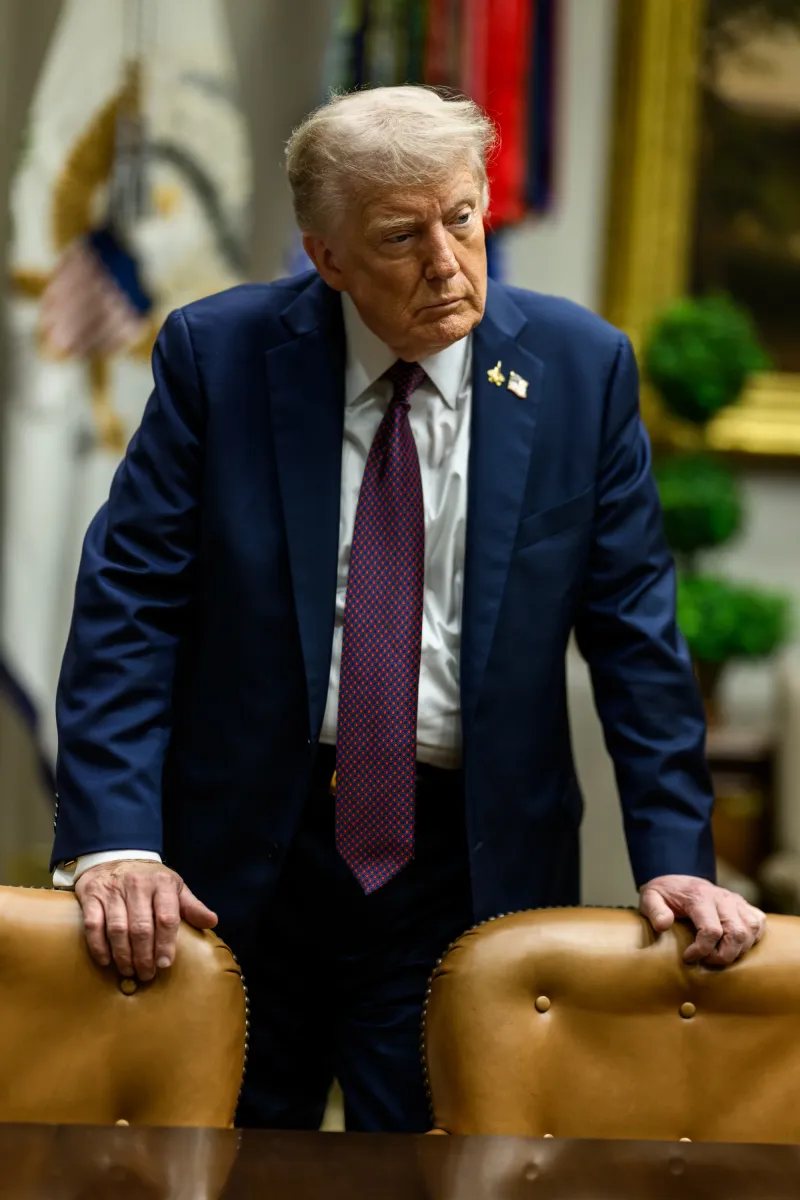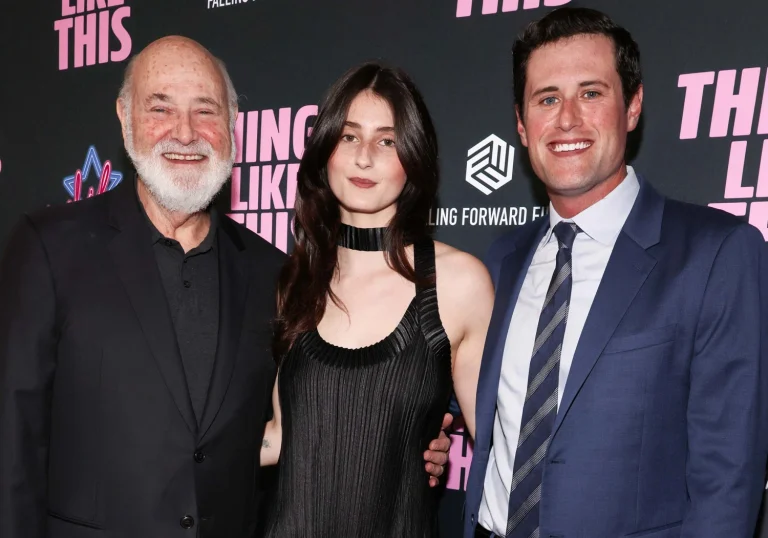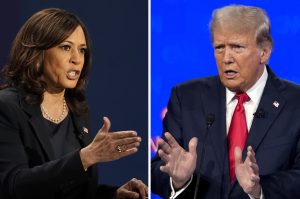Donald Trump has once again found himself at the center of controversy after posting an AI-generated video that shows him throwing a cap emblazoned with the words “Trump 2028.” The post, which appeared on his Truth Social account, quickly drew criticism from both political opponents and concerned citizens who accused the president of mocking constitutional limits on presidential terms.
A Viral Image Sparks Debate
The uproar began on September 29, when the 79-year-old president shared a photo from a meeting in the Oval Office. The gathering reportedly involved discussions with Democratic leaders over a deal to avert a government shutdown. But the policy conversation wasn’t what grabbed public attention — it was what sat on the Resolute Desk.
In the image, several hats bearing the slogan “Trump 2028” were neatly arranged in front of Trump. The detail instantly ignited speculation online, with many interpreting it as a cryptic suggestion that the two-time commander-in-chief might be hinting at another run for the White House — a move that would be unconstitutional under the 22nd Amendment, which restricts presidents to two elected terms.
The symbolism struck a nerve. While Trump supporters brushed it off as political trolling or satire, others viewed it as a subtle but dangerous attempt to normalize the idea of breaking one of America’s most fundamental constitutional boundaries.
The AI Video That Escalated the Firestorm
Instead of clarifying whether the image was meant as a joke or an intentional provocation, Trump escalated the situation days later. On October 3, he shared an AI-generated video depicting an animated version of himself tossing a “Trump 2028” hat toward Hakeem Jeffries, the Democratic minority leader in the House of Representatives.
The short clip, seemingly created with the help of artificial intelligence, was posted with no caption or explanation. Within minutes, it went viral. Supporters hailed it as clever political humor; critics condemned it as another example of Trump blurring the lines between political entertainment, misinformation, and authoritarian posturing.
Given Trump’s ongoing reputation for using Truth Social as a platform for direct and often provocative communication, the AI video didn’t come as a complete surprise. Yet its content — particularly the “Trump 2028” reference — struck a chord with those already wary of his disregard for democratic norms.
Outrage Across Social Media
The backlash online was immediate and intense. Users on X (formerly Twitter) and other social platforms flooded comment sections with disbelief, frustration, and alarm.
“Trump spent yesterday’s meeting with Democratic leadership taunting them with ‘Trump 2028’ hats,” one user wrote. “He’s not serious about governing — he’s openly mocking America’s Constitution.”
Another shocked commenter asked, “Are we acknowledging that the hat says ‘Trump 2028’? Excuse me? How is this not bigger news?”
Others went further, drawing comparisons to former President Barack Obama, saying that if Trump could openly flirt with the idea of a third term, then the same logic should apply to past presidents. “If Trump can flaunt his Trump 2028 hats on the Resolute Desk and trample the Constitution,” one person said, “then Obama should be allowed to run again too.”
A fourth critic described the “Trump 2028” hat as “a warning of what’s to come,” suggesting that Americans were ignoring the potential erosion of institutional limits. “It’s not just a hat,” they wrote. “It’s a symbol of a man testing how far he can push the line.”
A Pattern of AI Controversies
This was not Trump’s first brush with controversy involving AI-generated media. Just days before sharing the “Trump 2028” clip, the president had already drawn attention for posting another AI video promoting a bizarre conspiracy theory about so-called “Medbeds” — futuristic healing devices that supposedly regenerate organs, cure disease, and even reverse death.
In that earlier post, Trump shared a fake Fox News-style broadcast featuring an AI-generated version of his daughter-in-law Lara Trump as the anchor. The video depicted an artificial Trump announcing a nationwide healthcare initiative that would give every American a “MedBed card,” granting access to these fictional machines.
The message read: “Every American will soon receive their own MedBed card. With it, you’ll have guaranteed access to our new hospitals led by the top doctors in the nation, equipped with the most advanced technology in the world.”
Though the video was deleted within hours, screenshots circulated widely across social media, sparking confusion and concern. Many users wondered whether the president himself believed the content or was deliberately amplifying false information. The White House did not issue an official statement clarifying the intent behind the post.
The Broader Concern: AI, Misinformation, and Power
The use of AI-generated media by a sitting president has raised serious questions about the future of political communication and the potential for deception in the digital age. Experts warn that such content — even if shared jokingly — can erode trust in legitimate information and blur the boundaries between satire and reality.
Political analysts noted that Trump’s willingness to engage with AI-generated propaganda echoes his broader strategy of using spectacle to dominate public attention. Every time controversy erupts, the narrative remains centered on him — regardless of whether the issue concerns governance, constitutional limits, or digital ethics.
Critics argue that this pattern reflects a dangerous normalization of misinformation. “When the most powerful man in the world shares AI content that confuses fact and fiction, it’s not just trolling — it’s shaping public perception,” said one media ethics commentator. “It teaches people to treat truth as entertainment.”
The Symbolism of “Trump 2028”
While the “Trump 2028” hats may seem like a small, tongue-in-cheek gesture, their symbolism cuts deeper. The 22nd Amendment — ratified after Franklin D. Roosevelt’s four terms — was designed to prevent any one person from consolidating excessive power. For many Americans, seeing the sitting president display and promote items suggesting a third term feels like a deliberate provocation.
Even if the hats were meant as satire, critics say the optics matter. In an era when democracy worldwide faces strain from populism and disinformation, images that appear to undermine constitutional limits can further fuel public distrust and polarization.
Supporters, however, dismissed the outrage as overblown. They argue that the AI video and “Trump 2028” hats are nothing more than playful political branding — part of Trump’s trademark style of showmanship that his base loves. “He’s joking,” one supporter wrote online. “The left can’t take a joke. They take everything literally.”
The Growing Role of AI in Politics
Trump’s latest posts highlight a new reality: artificial intelligence is reshaping political storytelling. From campaign ads to digital satire, AI now allows public figures to create hyper-realistic content that can instantly reach millions.
But the same tools also carry risks. Without clear disclaimers or transparency, AI-generated videos can easily mislead viewers, spread conspiracy theories, or distort political narratives. When used by powerful figures, these tools can blur accountability — allowing them to claim humor or ignorance when controversies arise.
As technology continues to advance, calls are growing for clearer regulations requiring political content made with AI to be labeled as such. Transparency, experts say, is essential to preserving trust in democratic systems.
Conclusion
The uproar over Trump’s “Trump 2028” AI video reveals far more than a simple internet joke gone wrong. It underscores a growing unease about how political power, technology, and truth intersect in the modern era. Whether Trump intended the post as satire or provocation, the effect is the same: it has reignited debates about constitutional limits, the ethics of AI in politics, and the fine line between humor and manipulation.
As the conversation continues, one thing is clear — in the age of artificial intelligence, even a digital hat can spark a very real national controversy.

Emily Johnson is a critically acclaimed essayist and novelist known for her thought-provoking works centered on feminism, women’s rights, and modern relationships. Born and raised in Portland, Oregon, Emily grew up with a deep love of books, often spending her afternoons at her local library. She went on to study literature and gender studies at UCLA, where she became deeply involved in activism and began publishing essays in campus journals. Her debut essay collection, Voices Unbound, struck a chord with readers nationwide for its fearless exploration of gender dynamics, identity, and the challenges faced by women in contemporary society. Emily later transitioned into fiction, writing novels that balance compelling storytelling with social commentary. Her protagonists are often strong, multidimensional women navigating love, ambition, and the struggles of everyday life, making her a favorite among readers who crave authentic, relatable narratives. Critics praise her ability to merge personal intimacy with universal themes. Off the page, Emily is an advocate for women in publishing, leading workshops that encourage young female writers to embrace their voices. She lives in Seattle with her partner and two rescue cats, where she continues to write, teach, and inspire a new generation of storytellers.









